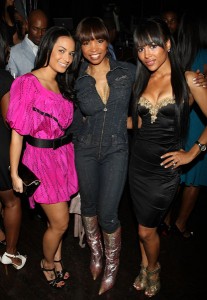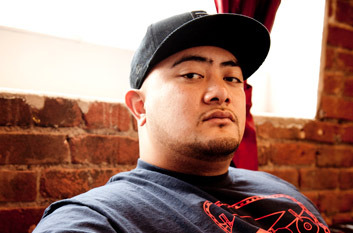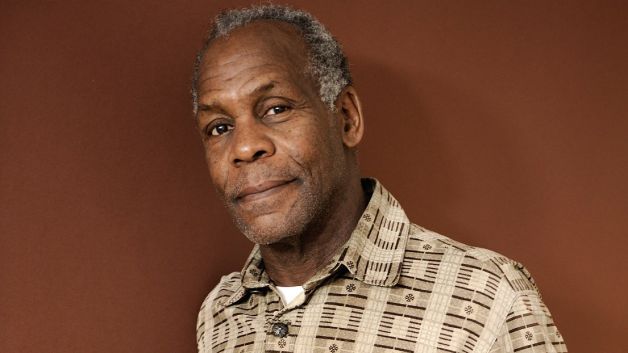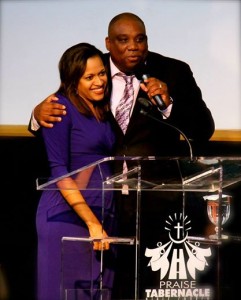Friday, May 23 to Sunday, May 25 featuring Steel Pulse, J Boog, Katchafite, Stick Figure, The Expanders and many more. On Saturday, May 24, Rebelution, Ziggy Marley, Iration, Alborosie, Zion and others will be performing. On Sunday, May 25, Damian ‘Jr Gong’ Marley, 311, Pepper, The Green, Skunk Records 25th Anniversary Live on Stage, Groundation, and the New Kingston Band will be performing. The fest will be held at the Monterey County Fairgrounds in Monterey. Camping is available. Tickets are on sale now. For more information, visitwww.californiarootsfestival.com.
What it do with Lue
Wednesday, May 21: Actress Elise Neal to host debut performance with R&B group “Assorted Flavors”
LOS ANGELES, CA – Next Wednesday, May 21, NAACP Image Award nominated actress Elise Neal will be gracing the Rooftop 3100 stage with her new R&B group, “Assorted Flavors” for a special debut performance and television taping.
Wednesday, May 21: J Boog and Hot Rain
Wednesday, May 21 at The Coach House located at 33157 Camino Capistrano in San Juan Capistrano at 8 p.m. All Ages are welcome. For more information call (949) 496-8930 or visit www.thecoachhouse.com.
Saturday, May 20: Young Visionaries Presents…Scholarship and Awards Gala
 Tuesday, May 20 from 6 p.m. to 9 p.m. at CSU San Bernardino (Santos Manuel Union Building), 5500 University Parkway, San Bernardino 92407. The host of the event is actor Noel G. and the co-host will be 99.1 KGGI radio personality and author Diana Wehbe. Tickets and $50 with dinner. Early bird tickets before April 30 are $40. For more information, contact Karla Stone at (909) 521-8621 or by email at gala@yvla-ie.org.
Tuesday, May 20 from 6 p.m. to 9 p.m. at CSU San Bernardino (Santos Manuel Union Building), 5500 University Parkway, San Bernardino 92407. The host of the event is actor Noel G. and the co-host will be 99.1 KGGI radio personality and author Diana Wehbe. Tickets and $50 with dinner. Early bird tickets before April 30 are $40. For more information, contact Karla Stone at (909) 521-8621 or by email at gala@yvla-ie.org.
Sunday, May 18: Festival of Authors at the County Museum
The San Bernardino County Museum will celebrate International Museum Day on Sunday, May 18 with a Festival of Authors. The event, which features more than a dozen authors, will run from 1 p.m. to 4 p.m. and is included with paid museum admission. For more information, visit www.sbcountymuseum.org.
Sunday, May 18: A Conversation with Danny Glover
Sunday, May 18: The New Black, Film Screening
The New Black premieres on PBS on Sunday, June 15at 10:30 p.m. Join One Nation Media for a special screening and discussion on Sunday, May 18 at 3 p.m. at Catch Up Not Just Coffee located at 10798 E. Foothill Blvd. in Rancho Cucamonga (91730). To reserve your FREE movie ticket, visit http://www.eventbrite.com/e/the-new-black-community-film-screening-tickets-11551172869.
Sunday, May 18: “Usher in God’s Glory to the Inland Empire”
CHINO, CA- Praise Tabernacle Bible Church will be presenting “Usher in God’s Glory to the Inland Empire” (Isaiah 40:4-5) concert with special guest “One Voice” featuring Donald Taylor of Faithful Bible Church Choir. The concert will be held on Sunday, May 18 at 6 p.m. at 4550 Eucalyptus Avenue in Chino (91710). For more information visit, www.praisetab.org.
Harlem Globetrotters Summer Clinics Coming to Los Angeles Area in Partnership with 24 Hour Fitness
 LOS ANGELES, CA- The world famous Harlem Globetrotters are bringing their widely popular Summer Clinics, in partnership with fitness club industry leader 24 Hour Fitness, to the Los Angeles area for more fun on the court with the only clinics coached by Globetrotters stars.The Globetrotters will conduct 471 Summer Clinics in 19 markets across the U.S., including clinics on the following dates at area 24 Hour Fitness locations:24 Hour Fitness Hollywood Sport, 6380 West Sunset Blvd., Hollywood, CA 90028 on July 5-8; 24 Hour Fitness Carson Sport, 945 E. Dominguez St., Carson, CA 90746 on July 10-13; 24 Hour Fitness Northridge Super Sport, 19350 Nordhoff Street Unit D, Northridge, CA 91324 on July 15-18; 24 Hour Fitness Arcadia Sport, 125 North First Avenue, Arcadia, CA 91006 on July 19-22; and 24 Hour Fitness Orange Super Sport, 2102 N Tustin Ave., Orange, CA 92865 on July 24-29.
LOS ANGELES, CA- The world famous Harlem Globetrotters are bringing their widely popular Summer Clinics, in partnership with fitness club industry leader 24 Hour Fitness, to the Los Angeles area for more fun on the court with the only clinics coached by Globetrotters stars.The Globetrotters will conduct 471 Summer Clinics in 19 markets across the U.S., including clinics on the following dates at area 24 Hour Fitness locations:24 Hour Fitness Hollywood Sport, 6380 West Sunset Blvd., Hollywood, CA 90028 on July 5-8; 24 Hour Fitness Carson Sport, 945 E. Dominguez St., Carson, CA 90746 on July 10-13; 24 Hour Fitness Northridge Super Sport, 19350 Nordhoff Street Unit D, Northridge, CA 91324 on July 15-18; 24 Hour Fitness Arcadia Sport, 125 North First Avenue, Arcadia, CA 91006 on July 19-22; and 24 Hour Fitness Orange Super Sport, 2102 N Tustin Ave., Orange, CA 92865 on July 24-29.
Each day consists of three separate, two-hour sessions from 9 a.m. to 11 a.m.; 12:30 p.m. to 2:30 p.m.; and 3:30 p.m. to 5:30 p.m.At the Harlem Globetrotters Summer Clinics, kids will spend two fun-filled hours with their friends being coached by Globetrotters stars; learn more than just the fundamentals, as the Globetrotters emphasize how to be a good teammate on and off the court; find out just how much fun basketball can be for kids of all skill levels; leave with an official clinic certificate, personalized nickname and ticket voucher to the Globetrotters’ 2015 North American Tour (valued up to $40); and have a photograph and autograph session at the end of the clinic.
Clinics are open to boys and girls of all skill levels, ages 6 to 12. The registration price is $69 per two-hour session, but those who register by March 17, 2014, will save $15 per registration. For more information, and to find the clinic nearest you, visit www.harlemglobetrotters.com/clincs.
Saturday, May 17: The California African American Museum Celebrates Literacy Day
LOS ANGELES, CA- Join the California African American Museum (CAAM) in celebrating Literacy Day at CAAM Heads are Turning, Children are Learning on Saturday, May 17 from 10:30 a.m. until 4 p.m. Co-hosted by actor Donis Leonard Jr. from Showtime’s House of Lies, CAAM promotes literacy through fun and entertaining events.
Literacy Day at CAAM will include celebrity readers, local authors and art and writing workshops. Participating celebrities who will read to children on CAAM’s main stage include actor Deidrie Henry from Beautiful Boy, actress Karen Malina White from The Cosby Show, and actress Jackeé Harry from 227. In addition, local authors will read to children in the CAAM galleries. Other activities include live performances, art workshops and face painting. Eso Won Books, an independent Black-owned bookstore, will be on site selling the books included in the program, where guests can purchase a special book gift for their friends and family.
Adults have not been left out in this day of literacy, as the Los Angeles Public Library will host a table providing library information and adult literacy. Guests are also encouraged to stop by the CAAM galleries and take advantage of the free exhibitions, which open at 11 a.m.
CAAM is located at 600 State Drive in Exposition Park, Los Angeles, CA 90037. ADMISSION IS ALWAYS FREE! Accessible parking for all of Exposition Park is located at 39th & Figueroa for $10 per vehicle. For more information on CAAM call (213) 744-7432 or visit www.caamuseum.org.
 Westside Story Newspaper – Online The News of The Empire – Sharing the Quest for Excellence
Westside Story Newspaper – Online The News of The Empire – Sharing the Quest for Excellence



